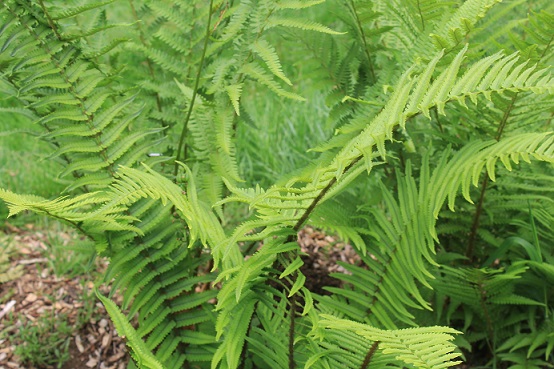A detailed look at the identification and culture of ferns
We think of ferns as shade loving plants that need damp conditions; and many are. There are however ferns that grow in all sorts of conditions, from
extremely hot to very cold. Some grow just as well in the full sun, as
others do in very heavy shade; and some will even survive extended
periods of drought. You can grow ferns as an indoor plants; in woodland or water gardens, in
areas that are difficult to drain or prone to flooding, or as container
plants in a shadehouse or fernery.
In this course we take a detailed look at the identification
and culture of ferns. There is so much more than meets the eye with
these wonderful prehistoric plants! Learn to propagate ferns (spores, division, tissue culture), and study different
groupings (e.g. epiphytes, ground ferns, tree ferns) and both common
& uncommon species. Growing techniques (baskets, indoor/outdoor
containers, terrariums) and cultural methods (soils, watering, pest
& disease control) are also examined.
This is a course for amateurs and professionals; plant collectors and
breeders, nurserymen, botanists, landscapers, gardeners and
horticulturists.

CONTENT
Emphasis is placed on the horticulturally valuable species. The content of each of the eight lessons is as outlined below:
- Introduction - Review of the system of plant
identification, general characteristics of the ferns (especially the
fronds), main groups of ferns (filmy, tree, terrestrial, epiphytic and
water ferns), information contacts (i.e. nurseries, seed, clubs, etc.),
pronunciation of plant names.
- Culture - How best to grow ferns and what
conditions do they need. Planting, mulching, watering, pest &
disease and their control, feeding, pruning, protection from wind, salt
air, etc., compost making.
- Propagation - Methods of propagating ferns - spores, division, tissue culture. Propagation of selected varieties.
- The Most Commonly Grown Varieties - Maidenhairs, tree ferns, stags, elks, common ground ferns. How to grow and propagate these ferns.
- Other Important Groups - Asplenium, Blechnum, Nephrolepis,
Pteris and other groups. Group characteristics, cultural details,
propagation methods.
- Other Varieties - Hares foot fern, Bracken, Fans, Corals and Combs.
- Making the Best Use of these Plants - In
containers, hanging baskets, terrariums, in the ground, as indoor
plants, growing and showing, growing for profit (to sell the plants or
what they produce).
- Special Assignment - Detailed culture and identification of one genera.
AIMS
- Distinguish between different types of ferns in cultivation, including twenty different genera and fifty different varieties.
- Determine critical cultural practices required to successfully grow ferns in different specified situations.
- Determine the cultural requirements of specific fern varieties.
- Apply various specialised techniques to the culture of ferns.
Prepare a planting plan for an area using ferns.
Learn How there is so much Variation between Ferns
There are varieties of ferns to be found in all corners of the world, from the Arctic to the tropics, and on every continent except Antarctica. Even though we think of ferns as growing in wet places, this is not always so. Some species in fact thrive in dry climates. There are ferns which grow in coastal areas, exposed to severe wind and salt spray. There are varieties which are drought resistant and others which tolerate extremes of heat or cold.
Generally, those varieties which occur in harsher environments have developed special mechanisms for dealing with extreme conditions. Some are deciduous plants which die back to the roots when the weather becomes severe, then regrow when the season turns more favourable. Other ferns have small, thick, hardy fronds to help them resist cold or wind. Drought-resistant ferns frequently have a covering of scales or hairs which reduce the rate of water loss from the fronds. Many ferns survive dry conditions by growing their roots among and under rocks or logs where the soil remains cool and moist even on the hottest days.
As you progress through this course and become increasingly familiar with different types of ferns and their peculiar needs, your capacity to select the most appropriate species for a situation then grow it more successfully will develop significantly.